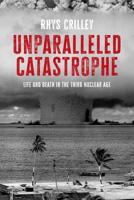Publisher's Synopsis
Potential adversaries of the United States continue to pursue weapons of mass destruction (WMD) to enhance their international influence and achieve greater strategic leverage against U.S. advantages. Increased access to expertise, materials, and technologies heightens the risk that these adversaries will seek, acquire, proliferate, and employ WMD. Furthermore, instability in states pursuing or possessing WMD or related capabilities could lead to dangerous WMD crises. The Department of Defense Strategy for Countering Weapons of Mass Destruction seeks to en-sure that the United States and its allies and partners are neither attacked nor coerced by actors with WMD. It outlines three end states: no new WMD possession, no WMD use, and minimiza-tion of WMD effects. The strategy also establishes countering WMD priority objectives for the Department of Defense (DoD), defines an approach for achieving them, and identifies essential activities and tasks. Countering WMD (CWMD) objectives focus on cooperative efforts to shape the security envi-ronment and take early action against adversaries. These objectives are to reduce incentives to pursue, possess, and employ WMD; to increase the barriers to WMD acquisition, proliferation, and use; to manage WMD risks emanating from hostile, fragile, or failed states and safe havens; and to deny the effects of current and emerging WMD threats through layered, integrated defenses. These objectives are advanced through three lines of effort: Prevent Acquisition, Contain and Reduce Threats, and Respond to Crises. These are supported by a strategic enabler, Prepare-the continuous cycle of ensuring that the Department's capabilities support essential CWMD activities, including maintaining and expanding technical expertise. This approach represents the full range of efforts undertaken by DoD to counter WMD risks. o implement this approach, the Department engages in activities to understand the environ-ment, threats, and vulnerabilities; control, defeat, disable, and dispose of WMD threats; and safeguard the force and manage WMD consequences. These activities require combining ena-bling capabilities with specialized CWMD capabilities to address specific threats. DoD prioritiz-es capabilities that counter operationally significant risks and that are not available elsewhere in the U.S. Government.









